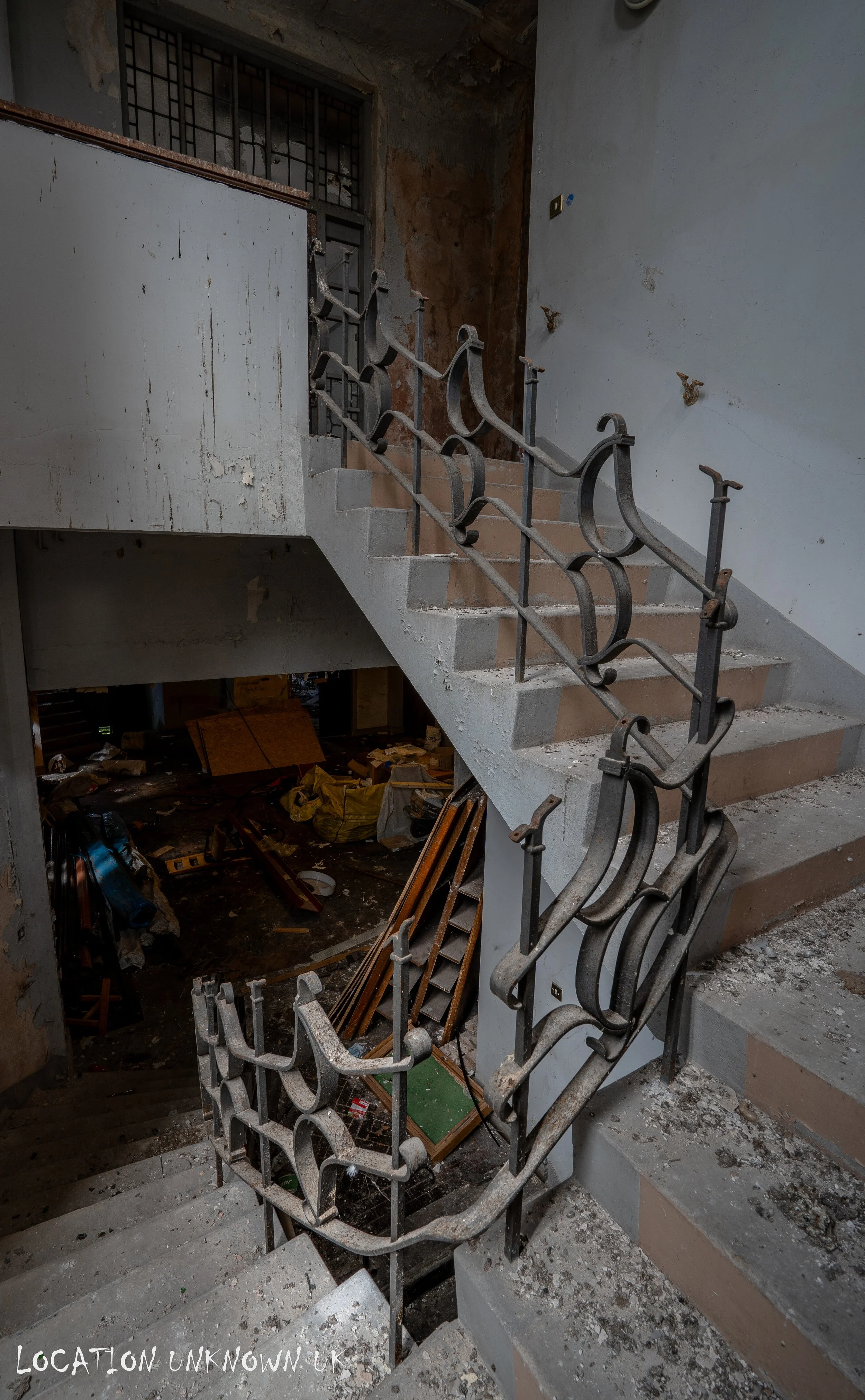Greenbank Synagogue - Liverpool
Greenbank was one of those classics that had been done to death over the years, and one I never got round to doing. I first saw reports from this place around 2014, and after lying dormant for six years it was like a time capsule with the added decay of some peeley paint. It’s surprising that a building as grand as this one hasn’t been turned into swanky apartments “yet”.
One sunny afternoon, me and Gronk found ourselves a bit damp after exploring a nearby railway tunnel and decided to have a pop at the place. I vaguely remember trying this one about ten years back, and the defences definitely seemed more formidable back then. However, these days it seems there’s just the original brick and wrought iron fence, followed by a flimsy plyboard one.
Once inside, it looked as if renovation work had just started in the main foyer, with temporary lights and some light gutting. The rest of the place had seen its fair share of graffiti and general trashing, but for somewhere that’s been closed for over 17 years, it’s holding up quite well.
It was quite a chilled explore. No anxiety about evading security or being spotted by curtain twitchers, and it was interesting to notice the small details left behind, like each chair being tagged with a number and an associated name to match.
History
“The Greenbank Synagogue in Liverpool, a Grade II* listed building, acclaimed as the most architecturally significant inter-war synagogue in Europe, boasts a rich history rooted in the city's evolving Jewish community. Its origins trace back to an 1838 schism within the Liverpool Hebrew Congregation, which led to the formation of the New Hebrew Congregation, initially worshipping in temporary premises before settling in a purpose-built synagogue on Hope Place in 1857. As the Jewish population migrated from the city centre to the wealthier Sefton Park suburbs after World War I, the Hope Place congregation, joined by a smaller Sefton Park Hebrew Congregation, sought a new, larger home. The foundation stone for the magnificent Greenbank Drive Synagogue, designed by Sir Ernest Alfred Shennan in an innovative blend of Art Deco and Swedish National Romantic styles, was laid on June 14, 1936, and it was consecrated on August 15, 1937, with Professor Henry Cohen (later Lord Cohen of Birkenhead) opening its doors. During World War II, the synagogue served as a reception centre for bombed-out families and a social hub for American Jewish GIs. Despite a devastating fire in 1959 that destroyed the Ark and Torah scrolls, the building was meticulously restored and re-consecrated in 1961. However, a significant decline in membership led to its final closure on January 5, 2008. Since then, the synagogue has fallen into disrepair, becoming a target for vandalism, despite approval in 2017 for a redevelopment plan to convert it into apartments while preserving historical features; however, progress has been significantly stalled by ongoing lease negotiations with Liverpool City Council, leaving its future uncertain”.
























